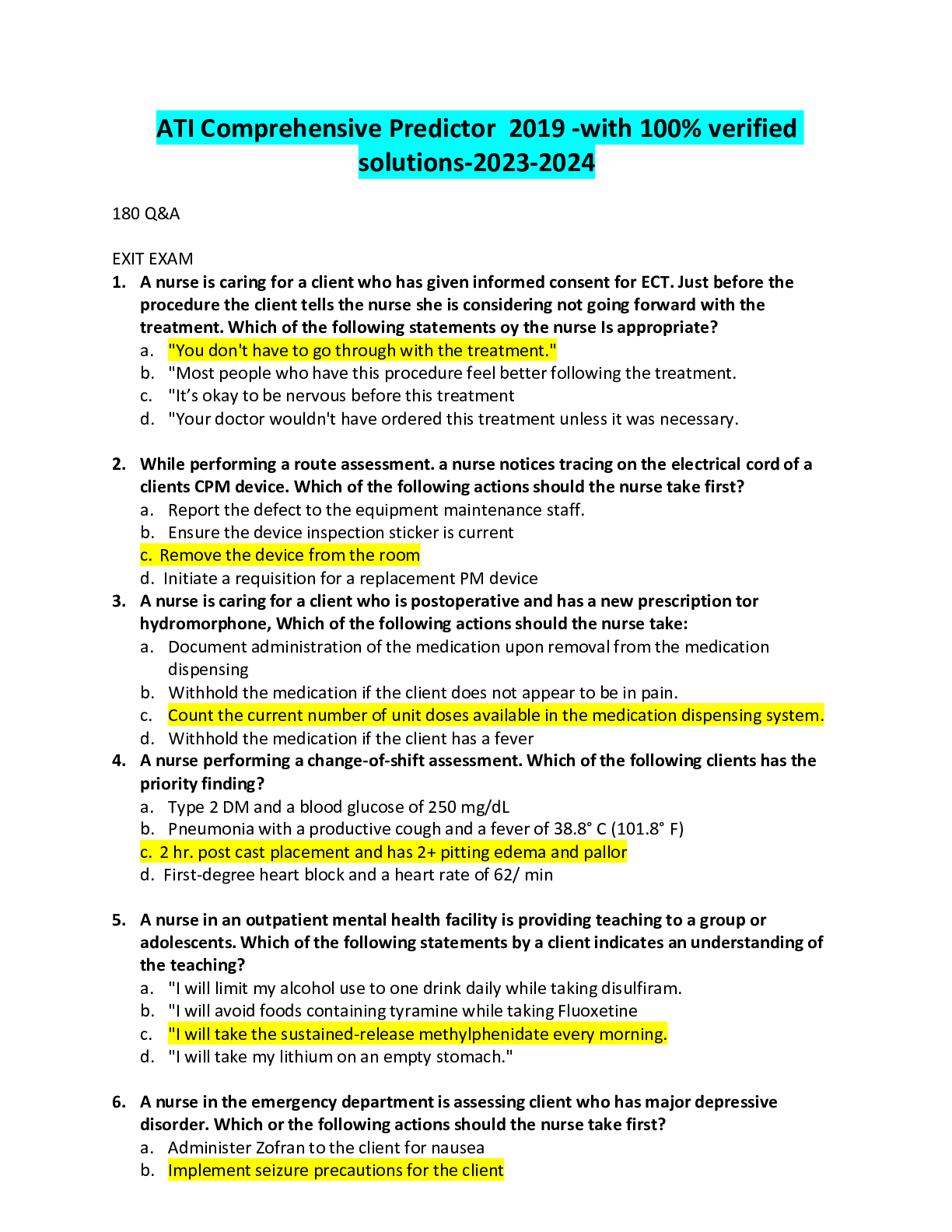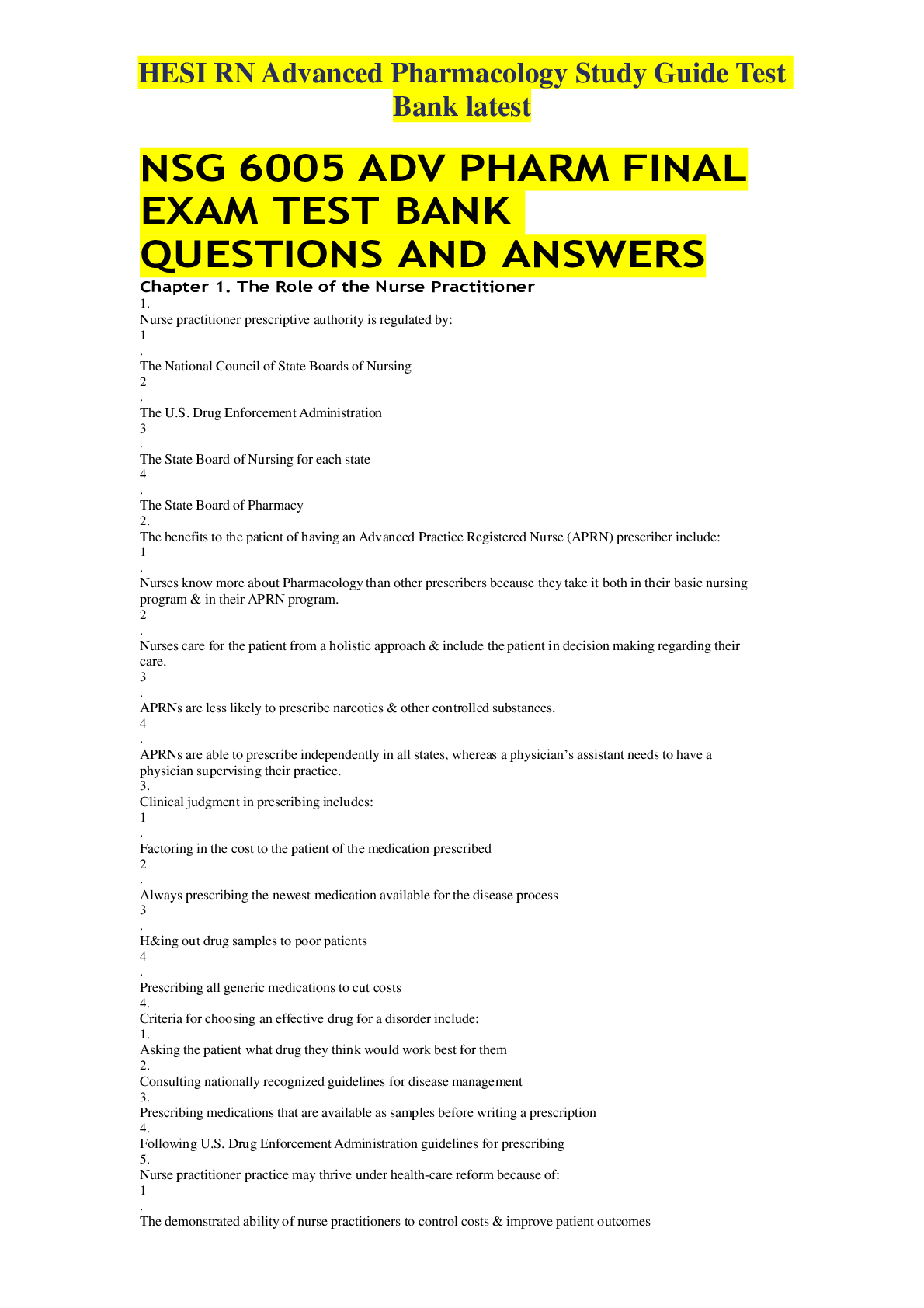NURSING MSN570- HESI RN ADVANCED PATHOPHYSIOLOGY EXAM-graded-2022
Document Content and Description Below
1. Following routine colonoscopy screening, a client is told that he had several polyps removed. The client began crying stating, “I just can't deal with cancer. I'm too young.” The nurse responds... : A) “Don't worry. We have some great cancer doctors on staff. I'm sure chemo will help you fight it.” B) “Maybe if you're lucky, they have stopped it from metastasizing to your liver.” C) “A simple intestinal surgery will cure you.” D) “Most colon polyps are not cancerous. The biopsy results will direct your care. Ans: D Feedback: A polyp is a growth that projects from a mucosal surface, such as the intestine. Although the term usually implies a benign neoplasm, some malignant tumors also appear as polyps. Adenomatous polyps are considered precursors to adenocarcinomas of the colon. 2. A lung biopsy and magnetic resonance imaging have confirmed the presence of a benign lung tumor in a client. Which of the following characteristics is associated with this client's neoplasm? A) The tumor will grow by expansion and is likely encapsulated. B) The cells that constitute the tumor are undifferentiated, with atypical structure. C) If left untreated, the client's tumor is likely to metastasize. D) The tumor is likely to infiltrate the lung tissue that presently surrounds it. Ans: A Feedback: Benign neoplasms typically grow by expansion rather than invasion. As well, they are usually contained within a fibrous capsule. Malignant tumors are associated with undifferentiated cells, metastasis, and infiltration of surrounding tissue. 3. A newly diagnosed lung cancer client asks how his tumor spread (metastasized) so fast without displaying many signs/symptoms. The nurse responds that malignant tumors affect area tissues by: A) Increasing tissue blood flow B) Providing essential nutrients C) Liberating enzymes and toxins D) Forming fibrous membranes Ans: C Feedback: Malignant tumors affect area tissues by liberating enzymes and toxins that destroy tumor tissue and normal tissue. In addition, the malignant cells compress area vessels, causing ischemia and tissue necrosis. The high metabolic rate of tumor growth causes the tumor to deprive the normal tissues of essential nutrients. 4.A client had a positive Pap smear. The surgeon diagnosed “cancer in situ of the cervix.” The client asks, “What does this mean?” From the following statements, which is most appropriate in response to this question? The tumor has: CONTINUED....... [Show More]
Last updated: 2 years ago
Preview 1 out of 49 pages

Buy this document to get the full access instantly
Instant Download Access after purchase
Buy NowInstant download
We Accept:

Reviews( 0 )
$14.00
Can't find what you want? Try our AI powered Search
Document information
Connected school, study & course
About the document
Uploaded On
Jun 08, 2022
Number of pages
49
Written in
Additional information
This document has been written for:
Uploaded
Jun 08, 2022
Downloads
0
Views
99

















